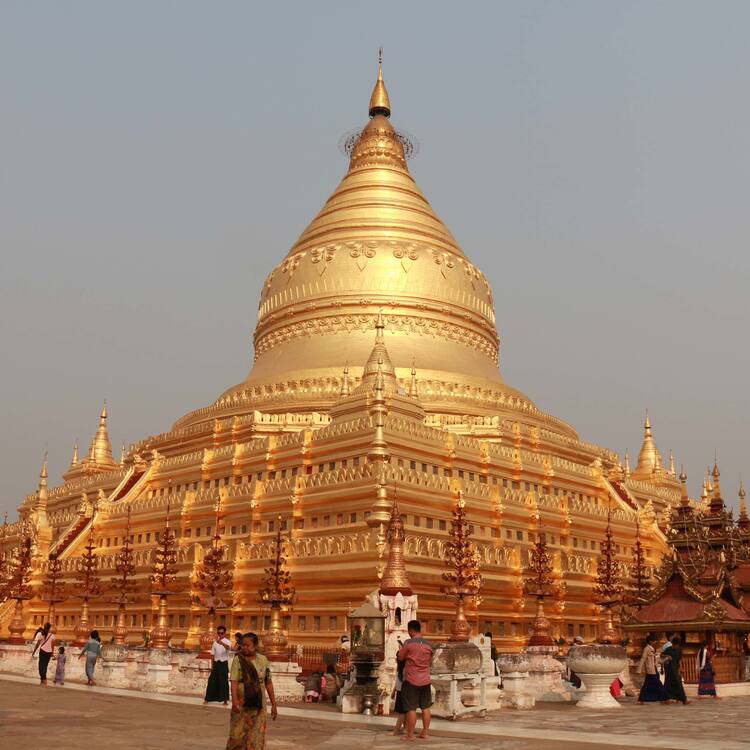Bagan, Myanmar, is one of Southeast Asia’s most extraordinary archaeological sites, famed for its stunning landscape filled with thousands of ancient temples and pagodas. Once the heart of a powerful empire, Bagan has evolved into a symbol of Myanmar’s spiritual and cultural heritage.
This ancient city holds centuries of history, artistry, and religious devotion. Here are several interesting facts about Bagan, each shedding light on its rich legacy and enduring appeal.
The Golden Era

Bagan flourished between the 9th and 13th centuries, particularly during the reign of King Anawrahta in the 11th century. As the founder of the Pagan Empire, Anawrahta converted to Theravāda Buddhism and made it the state religion. Under his rule and that of his successors, Bagan became a center for Buddhist learning and culture.
During this time, more than 10,000 temples, stupas, and monasteries were constructed across the Bagan plains. These structures were commissioned by kings, nobles, and ordinary citizens alike, reflecting the deep devotion of the Bagan people.
The golden era of Bagan not only solidified Myanmar’s Buddhist identity but also marked a period of immense cultural production, including advancements in architecture, sculpture, and literature.
A Sea of Temples and Pagodas

What makes Bagan especially mesmerizing is the sheer number of religious monuments that have survived the centuries. Today, around 2,200 temples and pagodas remain, scattered across a 26-square-mile plain by the Irrawaddy River.
The landscape is often described as a “sea of temples,” especially when viewed from above, where spires and stupas pierce the morning mist. Some of the most notable structures include the Ananda Temple, revered for its symmetrical architecture and gilded spires, and the Dhammayangyi Temple, the largest in Bagan, known for its mysterious, bricked-up inner passages.
Each structure is unique, reflecting a combination of Mon, Indian, and later Burmese architectural styles. The layout of Bagan was not random but symbolically designed to represent Buddhist cosmology and principles of merit.
Legacy of Artistry and Spirituality

Bagan is not just a showcase of architecture but also of intricate mural paintings, stucco carvings, and ancient inscriptions. Inside many temples, one can still find faded yet remarkable frescoes that depict scenes from the Jataka tales (stories of the Buddha’s previous lives), floral motifs, and celestial beings.
These artworks were intended not just as decoration, but as visual tools for teaching Buddhist doctrine to devotees, many of whom could not read. The art of Bagan represents a fusion of spirituality and creative expression.
Scholars believe that these paintings provide insights into the daily lives, beliefs, and aesthetics of the people who once lived there. Some murals also reflect astrological beliefs and tantric influences that entered Bagan from India and Tibet.
Earthquakes and Restoration

Despite its grandeur, Bagan has faced numerous challenges over the centuries, primarily from natural disasters. Earthquakes have struck the region repeatedly, with major ones occurring in 1975 and 2016.
These quakes caused severe damage to many structures, toppling stupas and weakening ancient walls. Efforts to restore and preserve Bagan have been ongoing, but they have not been without controversy.
Earlier restoration projects, especially those undertaken during military rule in the 1990s and 2000s, were criticized for using modern materials and ignoring historical accuracy. However, in recent years, there has been greater involvement from UNESCO and international conservation experts, leading to more sensitive and scholarly restoration practices.
UNESCO World Heritage Title

After years of campaigning and restoration work, Bagan was finally designated a UNESCO World Heritage Site in July 2019. This recognition came with the promise of international support for preservation efforts and brought renewed global attention to Bagan’s cultural importance.
The UNESCO listing also emphasized sustainable tourism and better protection policies, helping balance the need for economic development with heritage conservation.
Today, Bagan stands not only as a tourist attraction but as a protected site of human history, comparable to Angkor Wat in Cambodia or the ruins of Ayutthaya in Thailand.



















